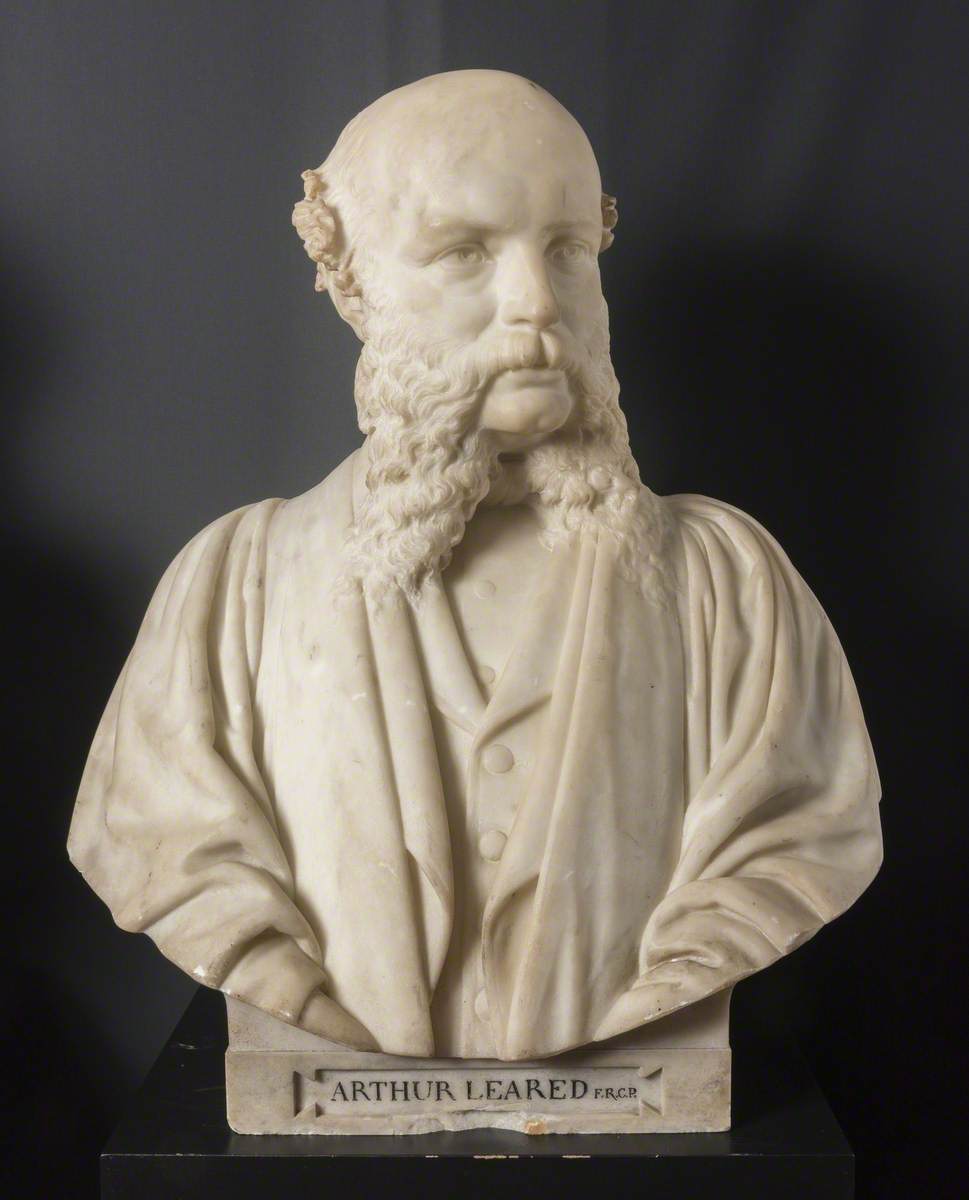By Brian Smyth
In October 2024 a plaque was unveiled in Wexford to Arthur Leared, best remembered for the invention of the biaural (using two ears) stethoscope in 1851. He also published several important medical papers and books. He travelled extensively and many of his travel books are still in print.

Arthur Leared was born in 1822 in the town of Wexford, where his father was a merchant. He studied medicine in Trinity College, Dublin, and obtained a BA in 1845, an MB in 1847 and subsequently an MD in 1860. He was a licentiate of the Royal College of Surgeons of Ireland and was admitted MD ad eundem to Oxford University in 1861.
Leared is best remembered for the invention of the biaural stethoscope. This was made possible by the importation of Malaysian rubber, or gutta-percha, to make flexible tubing that connected the bell to the earpieces. This invention was exhibited at the London Exhibition of 1851, catalogued as ‘double stethoscope made from gutta-percha’. A stethoscope is a device used to listen to the heartbeat, the lungs and the flow of blood through the arteries and veins, as well as other sounds coming from the body. It is also used when taking blood pressure. It was originally invented by René Laennec, a French doctor working in Paris, who was uncomfortable putting his ear to female patients’ chests to listen to their heartbeat. He found that by using a tube he got an enhanced sound. He called the device a stethoscope. The early stethoscope consisted of a wooden tube, sometimes with a cone at each end. It was monaural in that only one ear was used.
The biaural stethoscope was perfected for commercial production in 1852 by George Philip Cammann. Today the stethoscope is still used by the medical profession and many variants are available, including acoustic, electronic, recording, foetal and Doppler stethoscopes.
After qualifying, Leared initially worked in the Meath Hospital in Dublin and subsequently at the Oulart dispensary in County Wexford. He travelled to India in 1851 but for health reasons returned the following year and set up a medical practice in London. He became a member (1854) and fellow (1871) of the Royal College of Physicians.
Leared was a physician in the British civil hospital in Smyrna (present-day Izmir, Turkey) during the Crimean War in the 1850s; he also travelled in Palestine during this period. On returning from Smyrna, he became a physician at the Great Northern Hospital in London and the Royal Infirmary for Diseases of the Chest. He lectured in medicine at the Grosvenor Place School of Medicine, and he published papers on a variety of medical topics, most notably on digestion. His book The causes and treatment of imperfect digestion (1860), which is still in print, sealed his reputation.
Between 1862 and 1874 Leared made four visits to Iceland. He was sufficiently proficient in the language to be able to publish a book in Icelandic on Fatal cystic disease of Iceland. In the 1870s he visited Morocco on three occasions. In 1877 he was the physician to the Portuguese embassy in Morocco. He was given a safe-conduct passage by the Sultan, enabling him to travel extensively in Morocco, visiting a number of cities and the more remote areas of the country. He identified the Roman city of Volubilis. He published two books on his travels in Morocco, both of which are still in print. Believing that the climate in Morocco was more suitable for consumptive patients, Leared bought a plot of land near Tangier with the intention of building a sanatorium, but he died before this was realised.
Leared received many honours during his lifetime. He was elected to the Royal Irish Academy in 1852. He was a fellow of the Pathological Society, the Medical Society of London, the Royal Medical and Chirurgical Society and the Royal Geographical Society.
Leared married Anne Eliza Jeffries in 1853 in Dublin. She died in 1870. In 1872 he married Mary Jane Wynch, who outlived him. He died from typhoid fever at his home in Old Burlington Street, London, in 1879 and is buried in Highgate Cemetery.
Brian Smyth is the chair of the National Committee for Commemorative Plaques in Science and Technology.
